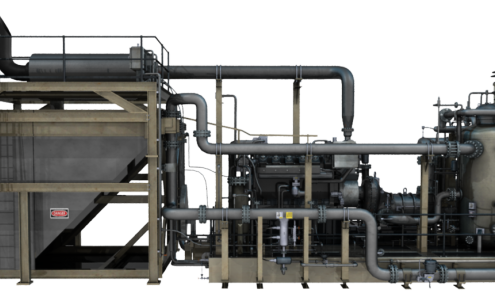BIM in Construction: What are the Benefits
In the construction industry, getting the best results depends heavily on using the best techniques and technology available to you. One example of a new technology that many construction projects managers are beginning to take full advantage of is building information modeling (BIM). BIM in construction uses advanced surveying technologies such as 3D laser scanning and unmanned aerial vehicles to gather data about buildings and the terrain around them and then turns that data into detailed virtual 3D models that can be used throughout the planning and design process.
Read on to learn more details about BIM in construction and how it can support better results for your project.
More Informed Decision Making
In the construction industry, the best decisions are based more on evidence and less on guesswork. When a project manager is able to look at a detailed 3D representation of the building in question before making a decision, it’s possible to take guesswork all the way down to zero.
Using the BIM 3D models, project managers can conduct simulations of different situations, allowing them to fully understand the potential consequences of a particular action before they take it. This provides a level of insight that simply would not have been possible in the days before BIM existed, and this new insight will no doubt lead to better project results.
Ensure a More Streamlined Project
One of the key sources of delays in construction projects is the need to make unexpected changes after the project is already underway. The only way to prevent these kinds of delays from occurring is to have a complete and accurate project plan in place before you begin working on a project. In order to create such a plan, you need data that can help you see all angles and account for all possible outcomes. This is where BIM comes into play.
With BIM, project managers are empowered to make sure they get things right the first time around. As a result, they can feel more confident that their project will proceed according to plan, and that there will be no unforeseen interruptions.
A Centralized Source of Up-To-Date Information
When paired with a cloud-based distribution platform like TrueAtlas, building information modeling becomes especially powerful. Pairing these two technologies together helps ensure that everyone can access the complete, accurate information they need, from wherever they happen to be, on whatever device they happen to be using.
As a result, a project team is empowered to collaborate on their decision making, while knowing that everyone involved with the decision is on the same page. This also helps to avoid the difficult situations that can arise when team members aren’t communicating with each other clearly enough. It’s no wonder that 43 percent of organizations that participated in a recent survey from Dodge Data & Analytics said they experienced more efficient project-wide communications after implementing BIM.
Lower Costs
Finally, BIM data can now be gathered using unmanned aerial vehicles. Unlike BIM data created by traditional surveying teams, UAV surveys are mostly automated and can be performed in a fraction of the time. This leads to a reduction in man hours needed to get started on a project, which in turn translates to lower costs.
Also, the increased accuracy that BIM in construction enables also keeps costs down. In addition to being time consuming, unforeseen issues that create the need for rework later on in the project are also very costly. Once again, BIM provides the level of accuracy that’s needed to make sure these issues don’t occur.
To learn more about BIM in construction or to get started with your BIM project, contact the experts at Landpoint today.







